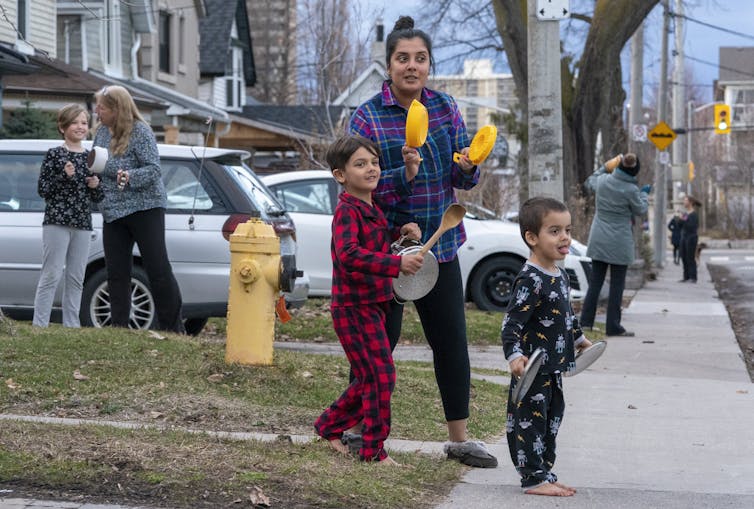Even during the coronavirus pandemic, public health workers' role is unrecognized: U of T's Vivek Goel

Published: April 29, 2020
The recent virtual concert brought together musical talent from around the world to thank front-line health workers and . Celebrities and politicians thanked those on the front lines of the response, including health-care workers and scientists working on COVID-19, those working in the food supply chain, as well as sanitation, delivery and mail workers.
However, nobody acknowledged all the people in public health agencies who have been working tirelessly during this crisis. This includes public health nurses and physicians, health inspectors and educators, laboratory technicians, epidemiologists and statisticians.
These are the people who work in the background to keep us healthy. They process the tests that identify who has the disease. They produce the statistics and models that track how the disease is progressing through our countries.
The lack of acknowledgement doesn’t surprise me. The work of public health is invisible, largely unrecognized by society. Despite increases to general spending on medical services, .
Fixation on front-line workers
I say this not just as a disgruntled public health specialist, upset to see my colleagues overlooked. There is something much more significant about our society’s fixation on front-line health care and medical approaches to disease management.
For the past century we have medicalized disease prevention and management for both infectious and chronic diseases. We focus on early detection and treatment (known as screening) and therapies () for disease prevention. Such medical models run counter to what is known as population health.

In a population health approach, we consider everyone and examine what keeps people healthy. are much more strongly related to health outcomes than biologic factors.
A population health approach promotes healthy living, healthy environments and healthy social policies balanced with appropriate medical interventions for those who need them. For example, can be reduced through a focus on . Population health approaches look at the environment in which people live and ensure they have the means and access to services to lead healthy lives.
In contrast, the medical model might focus on finding the people at highest risk for cardiovascular disease through screening tests and then prescribing them drugs. on health status and is more equitable across society.
Losing sight of larger perspective
What does this mean for our responses to COVID-19? The narrative to date has been dominated by the medical model ‚Äď testing and the search for treatments, ICU beds and ventilators.

We absolutely do need to focus on these factors to ensure we can treat those who develop severe disease. But this fixation has come at the expense of the population health perspective.
And I mean this literally. Newscasts are dominated by clinicians on the front lines and those with a biomedical perspective. How often have we seen Anthony Fauci, the head of the U.S. National Institute of Allergy and Infectious Diseases, versus Robert Redfield, the head of the U.S. Centers for Disease Control and Prevention? , but .
The medical model has focused on the immediate needs. To get us out of this, ‚Äď which could take years to roll out ‚Äď as the solution.
A population health perspective to COVID-19 considers the impact on the entire population, not just those with disease. It applies an equity lens to ensure no one gets left behind. A population health perspective will consider whether the consequences of continuing our current restrictive measures will cause more harm than good in the long run.
Socio-economic status is the strongest determinant of health. Long-term economic harm may have greater health consequences than COVID-19. But the deaths from COVID-19 are visible and in the news. The deaths that might result from the economic consequences will only be seen in statistics ‚Äď we won‚Äôt know who was directly affected. They will be invisible, just like public health.
We need to thank our public health workers. We also need to listen to them.![]()
is a professor at the Dalla Lana School of Public Health and vice-president of research and innovation, and strategic initiatives at the .
This article is republished from under a Creative Commons license. Read the .



